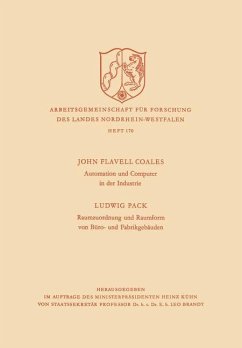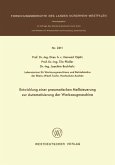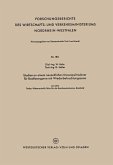In the planning of the spatial distribution of a system of organizational units between which transportation is necessary the attempt will always be made so to arrange the individual organizational units within the overall system that the expenditure in transportation influenced by the arrangement is kept to a minimum. In this lecture a method of calculation is described which permits the above-mentioned problem of minimization to be handled with computers. The basic idea is the successive improvement of an inital solution by interchanges in the organizational units of the system. The procedural manner to be applied is expanded to an iteration method. In addition to the theoretical presentation of the method, technical programm ing aspects are discussed and the limits defined which are set by the capacity and speed of modern computers. Two practical applications of the method are described, whereby it is specially indicated how particular conditions can be taken into account through extensions of the method. Resume A l'etude du partage d'espace d'un systeme d'unites d'organisation entre lesquelles sont a prevoir des transports, on essaiera toujours d'arranger les differentes unites d'organisation, en dedans de l'ensemble, de fa~on a !
Hinweis: Dieser Artikel kann nur an eine deutsche Lieferadresse ausgeliefert werden.
Hinweis: Dieser Artikel kann nur an eine deutsche Lieferadresse ausgeliefert werden.








